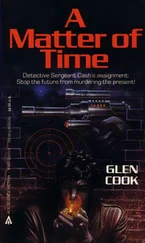Glen Cook - Passage At Arms
Здесь есть возможность читать онлайн «Glen Cook - Passage At Arms» весь текст электронной книги совершенно бесплатно (целиком полную версию без сокращений). В некоторых случаях можно слушать аудио, скачать через торрент в формате fb2 и присутствует краткое содержание. Издательство: Warner Books, Жанр: Фантастика и фэнтези, на английском языке. Описание произведения, (предисловие) а так же отзывы посетителей доступны на портале библиотеки ЛибКат.
- Название:Passage At Arms
- Автор:
- Издательство:Warner Books
- Жанр:
- Год:неизвестен
- ISBN:нет данных
- Рейтинг книги:3 / 5. Голосов: 1
-
Избранное:Добавить в избранное
- Отзывы:
-
Ваша оценка:
- 60
- 1
- 2
- 3
- 4
- 5
Passage At Arms: краткое содержание, описание и аннотация
Предлагаем к чтению аннотацию, описание, краткое содержание или предисловие (зависит от того, что написал сам автор книги «Passage At Arms»). Если вы не нашли необходимую информацию о книге — напишите в комментариях, мы постараемся отыскать её.
Passage At Arms — читать онлайн бесплатно полную книгу (весь текст) целиком
Ниже представлен текст книги, разбитый по страницам. Система сохранения места последней прочитанной страницы, позволяет с удобством читать онлайн бесплатно книгу «Passage At Arms», без необходимости каждый раз заново искать на чём Вы остановились. Поставьте закладку, и сможете в любой момент перейти на страницу, на которой закончили чтение.
Интервал:
Закладка:
Varese double-checks his board. There'll be no redundancy to the ship-to-ship. "Bring your probe up to maximum. Mr. Diekereide, how do you look?"
"All go here, sir. Ready to flood." He returns to his ongoing checklists.
"Stand by."
"Aye, sir. Shahpazian. Arm the hazard circuits."
"Achernar, Subic Bay, we have a go on one. I say again, we have a go on one," Varese says. "Subic, standing by for your mark."
"Subic, aye," a tinny voice replies. "Clear from Achernar.
Thirty seconds. Counting."
The flashing lights have me hypnotized. I stop taking notes. There's little enough to record. Too much takes place out of sight.
"Thirteen seconds and holding."
"What?" The hypnosis ends. Holding? Why? I stifle a surge of panic. Print data rush across the viewscreen. It says another Climber is maneuvering nearby, approaching another tank. Achernar wants her a little farther along before letting the tanker nurse us.
"Thirteen seconds and counting." Then, "... one. Zero."
"I have pressure on the outer main coupling," Diekereide says.
"Very well," Varese replies. "She looks good. Open her up. Commence fueling."
"Opening outer main valve. I have pressure on number two main valve. Opening number two main valve. I have pressure at primary tank receiving valve."
"We're looking good." Varese moves across the compartment, toward me. "This's a tricky spot. His first time doing it himself. Got a good go, so I'll leave him to it." He grasps a cross-member and stands beside me, watching his apprentice.
"He has to bleed it to a few moles at a time to begin. To annihilate any terrene matter inside the tank. No such thing as a perfect vacuum. It'll be hotter than hell to there for a few minutes."
"You travel with the tank open?" That hadn't occurred to me.
He nods. "Space is the best evacuator. Another reason we fuel so far from anywhere. Not much interstellar hydrogen around here. Comparatively speaking."
I try guessing how much energy might be blasting around the tank's interior. Hopeless. I don't have the vaguest notion of the hydrogen density in this region.
Deikereide opens the final valve. We all tense, waiting for something to go boom.
The tanker constricts her internal tank field. Diekereide bombards the compartment with a barrage of pressure reports. And then it's over. Almost anticlimatically, it seems. I was so tense, waiting for something to screw up, that I feel let down that it hasn't.
Disengagement reverses the fueling process. The only tricky part involves venting the CT gas still in the ship-to-ship coupling.
The cycle, from Varese's assumption of the conn till he yields it again, takes a little over two hours. When we finish, he and Diekereide shake hands. Varese says, "Very good show, men. The best I've ever seen." He must mean it, so seldom does he have anything positive to say.
"We were lucky," Diekereide tells me. "Usually takes three or four tries to get a go. The Old Man will be pleased."
The Engineers commence operational routine. I don't pay much attention. Diekereide has launched one of his long-winded and rambling explanations. "When it comes time to Climb," he says, after telling me things I already know about the tank atop the vane and the magnetics which prevent the CT from coming in contact with the ship, "we bleed the CT into the fusor, along with the normal hydrogen flow. Instead of fusing, we annihilate, then shunt the energy into the torus instead of the linear drives."
I don't pay much attention. The way to listen to Diekereide is through a mental filter. Let most of the chatter slide, yet catch the gems.
"There isn't any way to beat the fogging. It's because the ship is separated from the universe. If you can't stand it, stay out of null."
He's describing the subjective effects of Climb. When a vessel goes up, its crew experiences a growing insubstantiality in surroundings. From outside, the vessel becomes detectable only as an apparent minuscule black hole. There's a continuing debate over whether this is a real black hole or just something that looks and acts like one. It has moments when it violates the tenets of both Einsteinian and Reinhardter physics.
In essence, a ship in Climb can't be seen from outside, which is valuable in battle.
Unfortunately, said ship can't see, either. Astrogation in Climb is tricky work. Which explains Westhause's ardent affair with his Dead Reckoning tracer In null you have no referents, but you can maneuver. Even if you do nothing, you retain our norm inherent velocity and whatever weigh you put on in hyper. It vectors. You have to keep close track unless you don't mind coming down inside a star.
"That's really no problem, though," Diekereide says. "Unless you're operating in a crowded system, you won't come down in the middle of anything. The statistical odds are incredible. Build yourself a dome on a one-kilometer radius. Paint the inside black. Have a buddy take a blackened pfennig and stick it on the dome somewhere while the lights ate out. Then put on a blindfold, pick up a target rifle, and try to hit the coin. Your odds are better than ours of hitting a star by accident. The real danger is heat."
Every machine, even the human machine, generates waste heat. In norm and hyper ships shed excess heat automatically, by leakage through their skins, and, especially in Climbers, through cooling vanes. Our biggest such vane supports the CT tank. There are others on both the can and torus. The vessel has lots of lumps and bumps waiting its basic can and donut profile.
In null we can't vent a calorie. There's no place for the heat logo.
Heat is the bane of the Climbers, and not just because of the comfort factor. Virtually all computation and control systems rely on liquid helium superconductors. The helium has to remain at temperatures approaching absolute zero.
One way to cripple a Climber is to keep on her so tight she has to stay up. If she stays long enough, she'll cook herself. Forcing that is the principal function of the other firm's hunterkiller squadrons.
We aren't as unpredictable and evasive as the holonetnews would have people believe.
That little black hole, that little shadow we cast on hyper and norm, can kill us. "A pseudo- Hawking Hole," Diekereide says. "Named after the man who posited substellar black holes."
A Climber's shadow is minuscule but still distorts space. If someone comes close enough, with equipment sensitive enough, he can locate it.
There're three ways to hammer on a Climber in null," Diekereide says. He holds up three fingers, then folds one down. "First, and most effective in theory, and the most expensive, would be to send a drone Climber up to collide with your target and blow its CT. That's no problem right now.
The other firm doesn't have Climbers. Let's hope the war ends before they figure them out."
"Oh, yes." My tone is sufficiently sarcastic to raise an eyebrow.
"The other ways sound more difficult, and probably are, but they're what the other team has to work with. Their favorite is to concentrate high-wattage short-wave energy on our pseudo-Hawking.
Doesn't physically hurt us, naturally. But every photon that impacts on our shadow adds to our heat problem and shortens the time we have to shake them. They use fusion bombs the same way, but that's a waste of destructive capacity: Your pseudo-Hawking's cross section won't intersect a trillionth of the energy. But they'll do it if they want you bad enough.
"One thing they did, till we got wise, was to maneuver our shadow into their fusors. That puts a lot of heat in fast. But if you know what they're doing, you can maneuver and destabilize their magnetic bottle. They've given that up."
The other method of attack is plain physical battery.
A pseudo-Hawking point is so tiny it can slip between molecules. It doesn't leave the other firm much room to obtain leverage. But they've found their ways, usually using graviton beams from multiple angles. A Climber suffers every shock as the coherent graviton beams slam her Hawking point a centimeter this way or that.
Читать дальшеИнтервал:
Закладка:
Похожие книги на «Passage At Arms»
Представляем Вашему вниманию похожие книги на «Passage At Arms» списком для выбора. Мы отобрали схожую по названию и смыслу литературу в надежде предоставить читателям больше вариантов отыскать новые, интересные, ещё непрочитанные произведения.
Обсуждение, отзывы о книге «Passage At Arms» и просто собственные мнения читателей. Оставьте ваши комментарии, напишите, что Вы думаете о произведении, его смысле или главных героях. Укажите что конкретно понравилось, а что нет, и почему Вы так считаете.






